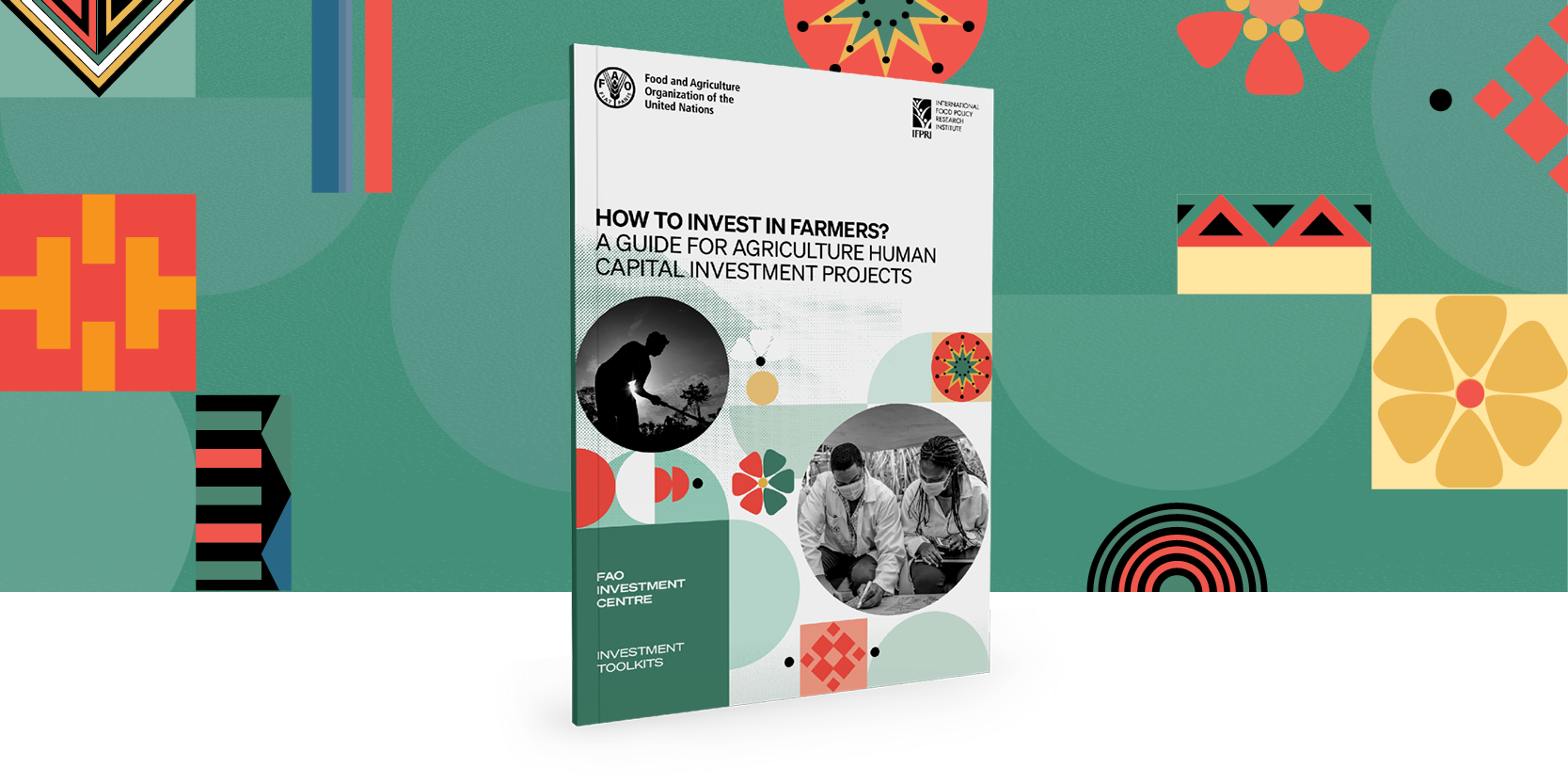How best to invest in farmers?

A new toolkit launching today shows how best to invest in farmers to drive innovation, boost productivity, strengthen farm management and empower smallholders.
How to invest in farmers? A guide for agriculture human capital investment projects aims to help policymakers, international and national development banks and the private sector to make sounder investment decisions on projects and policies that strengthen farmers’ capacities, to unlock their full potential.
The toolkit is the culmination of a global study into agriculture human capital investment (AHCI) from FAO and the International Food Policy Research Institute (IFPRI), with support from the FAO Research and Extension Unit and the CGIAR Research Program on Policies, Institutions, and Markets (PIM).
The study generated a wealth of evidence on promising investments in farmers’ human capital. A global report, nine country case studies and three investment briefs have also been published, in addition to the new toolkit.
“We believe this toolkit makes a unique contribution to the investment landscape by focusing on effective, proven tools and processes in human capital – an area that has suffered from underinvestment and lack of attention from governments, development finance institutions and other actors,” said Mohamed Manssouri, Director of the FAO Investment Centre.
“Investing in agriculture human capital contributes to farmers’ autonomy, empowerment and economic development. It helps to increase rural incomes, improve health and nutrition, and support social cohesion and the inclusion of women and youth,” said Manssouri.
Why invest in farmers?
Farmers, pastoralists, fishers, foresters and other small-scale producers are increasingly facing disruptive changes – from climate change, labour shortages and global pandemics such as COVID-19, to an explosive rise in digital technologies, shifting diets and rigorous global and national food safety standards.
At the same time, farmers are essential to feeding the world’s growing population with safe, healthy and nutritious food.
Farmers are fundamental to sustainably developing agricultural productivity, food and nutrition security and poverty reduction – top goals for governments and development institutions around the world.
They are central to implementing innovative solutions for more resilient and climate-smart agriculture.
But less than 3 percent of global agriculture development finance between 2015 and 2018 was invested specifically in enhancing the skills, education, knowledge, habits, experiences, attributes and capacities of farmers – or agriculture human capital.
Investments tend to favour 'hardware' investments, such as infrastructure, rather than the 'software' - which is the vast, vital resource of agriculture human capital.
Yet, the few studies which have measured returns on investment in developing farmers’ knowledge, skills and capacities – such as economic returns to investment in agricultural advisory services – show such returns to be between 50 to 80 percent.
“Under-investment in agriculture human capital development must be transformed,” said Johan Swinnen, Managing Director, Systems Transformation, CGIAR and Director General, IFPRI.
“The global study revealed profound, far-reaching benefits with more and better investments in innovative and cost-effective programmes to strengthen and measure human capital development. This toolkit provides clear strategies, good practices, guidance and recommendations on increasing the quantity and quality of investments in farmers,” said Swinnen.
Step-by-step to successful investment
The toolkit offers a series of seven accessible and actionable modules – each with clearly defined learning objectives – providing core foundations and a clear framework for successful agriculture human capital investment.
Starting with defining ‘human capital’ relative to other types of capital, it looks at building blocks for designing projects, with a step-by-step approach to analysing needs and targeting interventions.
It provides a wide diversity of formal and informal models and methods used to strengthen farmers’ skills and capacities, to meet different contexts and needs – from upgrading agricultural education systems and supporting extension or advisory services, to encouraging peer learning.
Deep-dives into two human capital development projects from India and Peru provide valuable insights into what worked best and how this was achieved.
The toolkit also gives sound advice on how to set up strong economic and financial frameworks and analyse cost-benefits, to help keep investors on board and secure ongoing finance.
Drawing on experiences from more than 20 initiatives globally where building farmers’ capacity was a key focus, the toolkit features case studies, concrete examples and methodology-in-action.
Putting farmers first
“First and foremost, we must focus on what is arguably our most valuable resource – our farmers,” said Swinnen. “They need more and better investments, and stronger partnerships, as well as targeted methods and inclusive approaches.”
At the root of this, understanding what motivates farmers is key to the success of such investments. “Incentives for learning, rooted in the needs and aspirations of farmers, are just as important as capacity-building initiatives,” said Manssouri.
As global agrifood systems face ongoing disruptions, challenges and opportunities, agriculture human capital capacity must keep pace. Inspiring and investing in farmers is a key starting point for agrifood system transformation.
